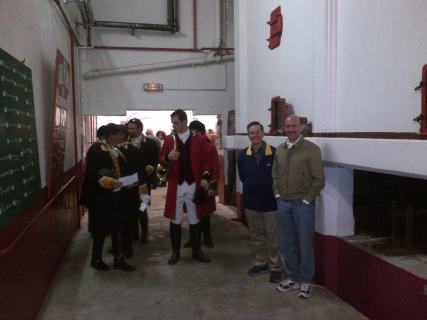This week we enjoyed two days of visits with an American couple wanting to explore the Sauvignon Blanc wines of the Loire Valley. We were delighted to put together this custom tour featuring one of our favourite grape varieties, in the region where it originated and has its finest expression.
In France, Sauvignon Blanc is grown in the maritime climate of Bordeaux as well as the continental climate of the Loire Valley. The climates of these areas are particularly favourable in slowing the ripening on the vine, allowing the grape more time to develop a balance between its acidity and sugar levels. This balance is important in the development of the intensity of the wine’s aromas. Winemakers in France pay careful attention to the terroir characteristics of the soil and the different elements that it can impart to the wine. The chalk and Kimmeridgean marl of Reuilly, Sancerre and Pouilly produces wines of richness and complexity, while areas with more compact chalk soils produces wines with more finesse and perfume. The gravel soil found near the Loire River and its tributaries impart spicy, floral and mineral flavours while in Bordeaux, the wines have a fruitier personality. Vines planted in flint along the Cher tend to produce the most vigorous and longest lasting wines.
Our clients selected a fine hotel in Amboise as their base and we collected them each day to begin our discovery of the region. First stop was Francueil, where we were able to witness the grape harvest arriving and tour the wine-making facilities of the growers co-operative. As we were to hear throughout our trip, quantities are cruelly low, while quality is above average this year. The combination of frost, hail and mildew during this growing season has not been seen since 1991, and crops are down to 20-30% of normal.
This co-op has been in operation since 1926 and is now the largest in the Loire. We were introduced to the recently retired winemaker who still comes in to help out for the pleasure of it, after working at the cellar for 42 years.
We were able to taste a range of interesting wines at Francueil, several with awards to their names. One of our favourites was their “Tete de Cuvee” AOP Touraine Sauvignon which has a silver medal in the World Sauvignon Wine Competition this year. We were also interested to taste the brand new appellation Touraine Chenonceaux and enjoyed this very much. Although 27 villages either side of the river Cher are allowed to produce wine under this name, there is currently only a tiny area in production and the growers are determined to produce wines of the highest quality here.
After a lunch at a restaurant in Montrichard we moved on to the famous Monmousseau wine cellars outside the town where more Sauvignon was tasted, both local and Sancerre from the eastern edge of the region on the river Loire. Their Cheverny contains 70% Sauvignon & 30% Chardonnay and made an interesting comparison. We were allowed to go off on our own and explore the tunnels where they store their sparkling wines but with around 15km of passages we were lucky to find our way back in one piece!
From here we went on to the co-op at St Romain sur Cher where their three Sauvignons cannot help but please and have won a clutch of awards. Our journey back to Amboise was through delightful countryside and ancient stone villages.
The next day we drove an hour and a half up the Cher, passed Vierzon to Quincy, an appellation of 240 Ha growing only Sauvignon and a hidden gem producing high quality wines. We spent the morning tasting many of them, both traditional still wines and those produced from vines 40 years old or more. The growers have invested in windmill-like fans which start up automatically and, in theory at least, protect the vines from frost. This year was extreme and much damage was done, but perhaps they were protected in part by this system.
Lunch was taken in Valençay, where we also took a look at the stunning chateau and its walled, soth facing vineyard. Tastings of Valençay wines were made at the co-op and at Chateau de Quincay, who produce both Valençay and Touraine wines, making an interesting direct comparison.
Our final breathless visit was across the river at a favourite vineyard where we saw the grapes coming in and were invited to help with the hand picking. My clients had a train to catch however, but we were able here to add the last piece to the Sauvignon puzzle, tasting late picked, sweet wine from last year’s crop.
Sweet, dry, still, sparkling; Sauvignon Blanc has it all and in a range of styles dictated by the nature of the soil and climate, in addition to the desires of the winemaker. This was a fascinating trip and a deep insight into the heart of a single grape variety.




